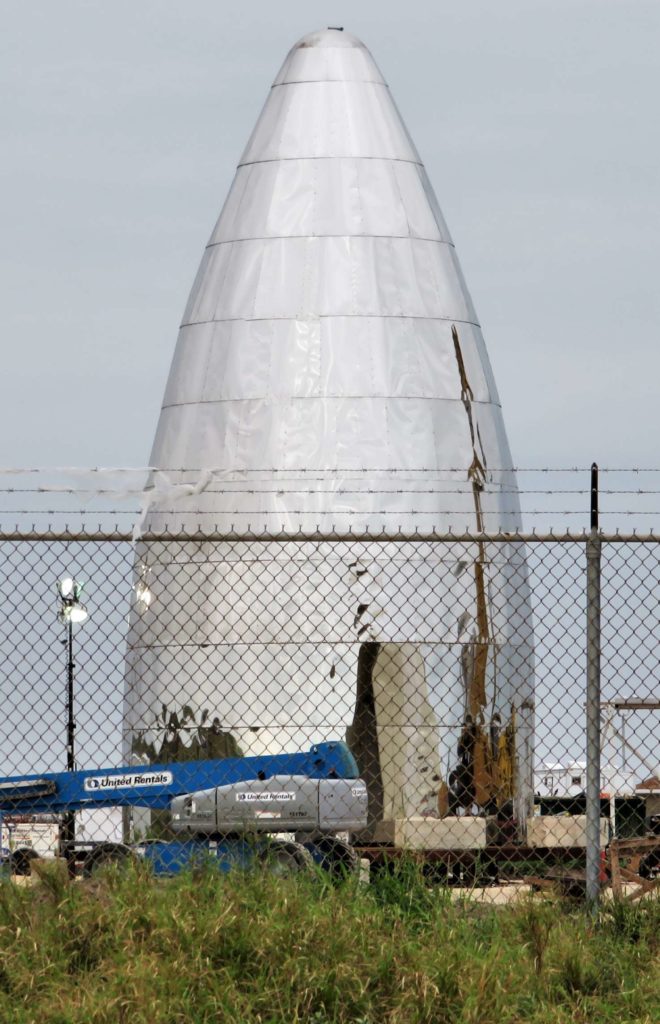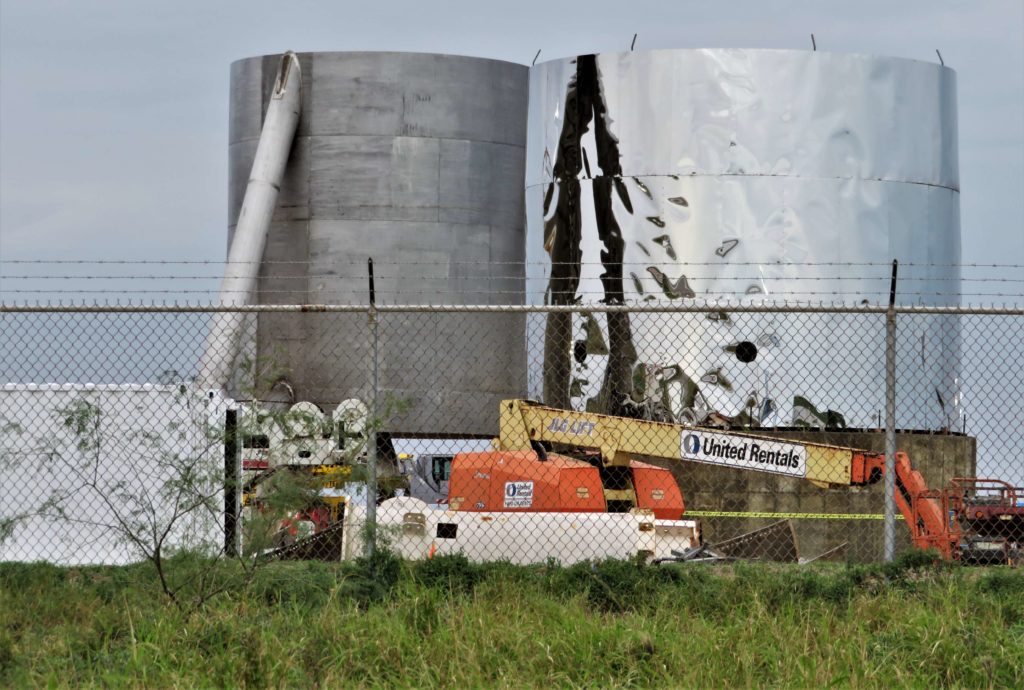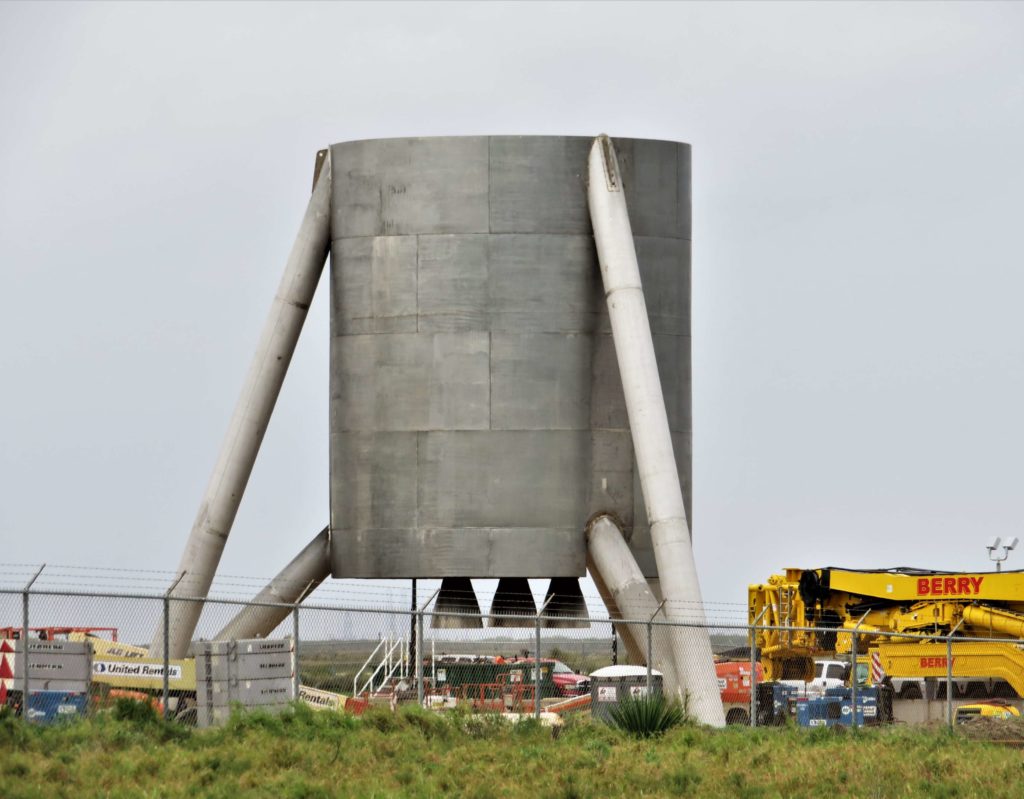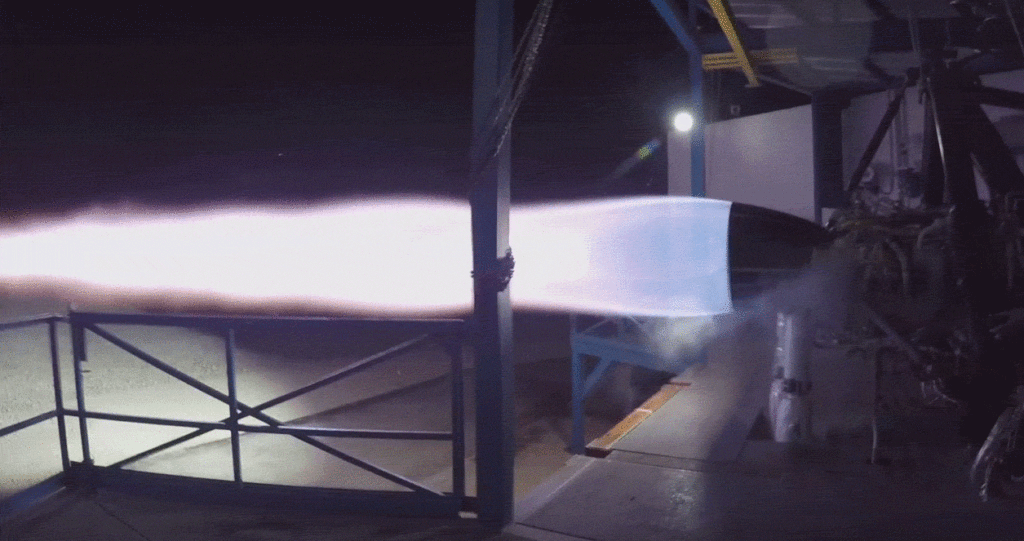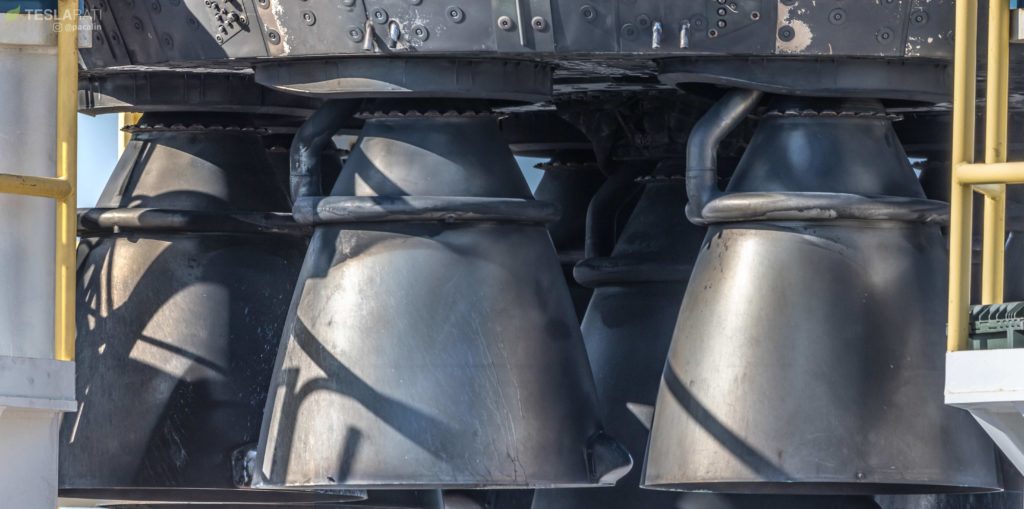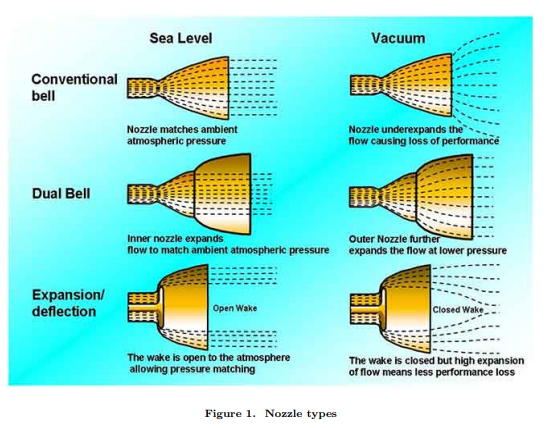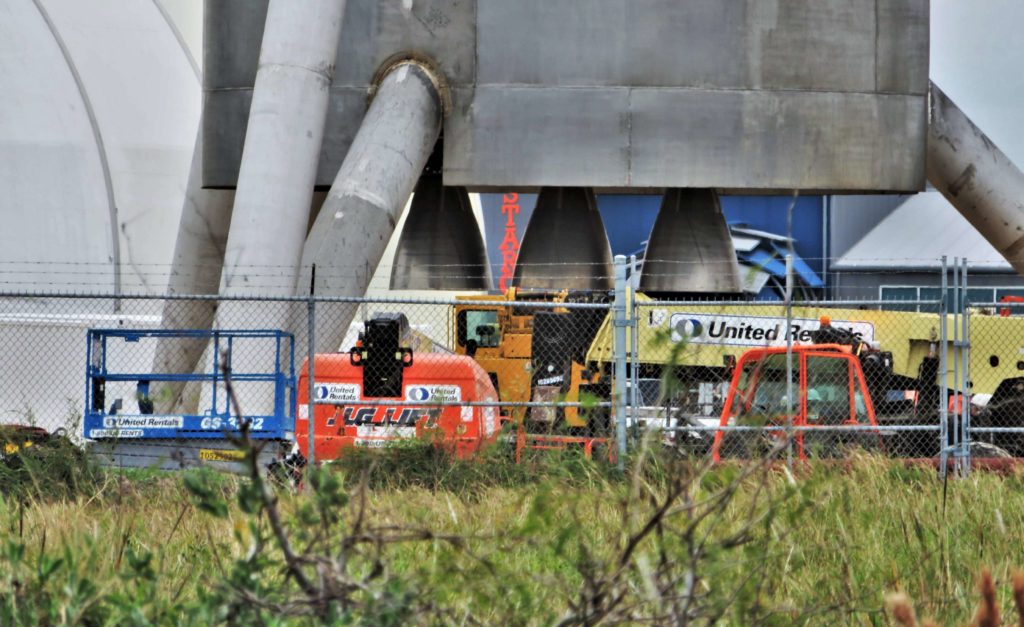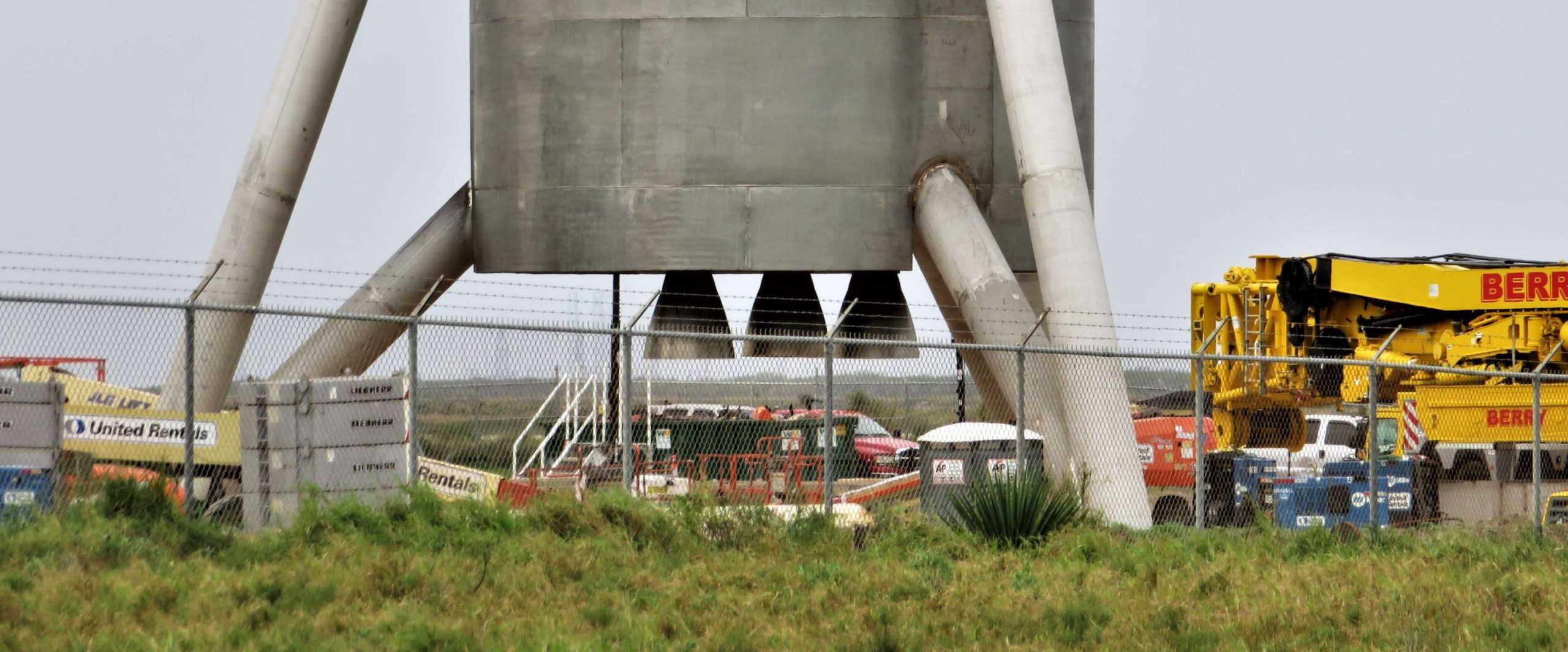
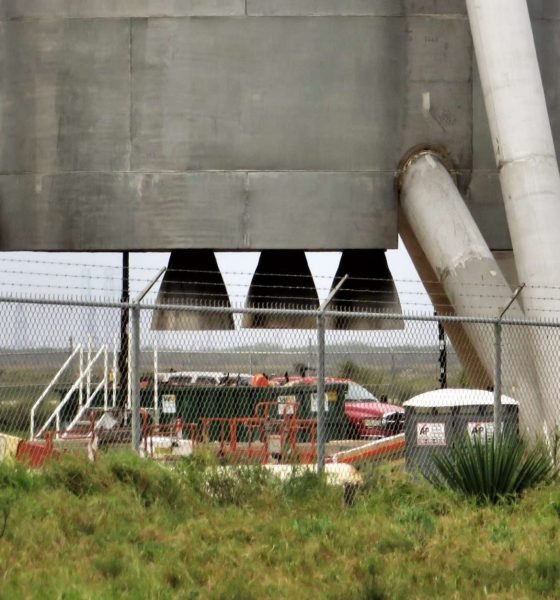
SpaceX
SpaceX’s Starship hopper spotted with trio of dual-bell Raptor engines
Following a brief ‘hop’ (via crane) off of a concrete build stand, the aft section of SpaceX’s first full-scale Starship hopper (Starhopper?) revealed that SpaceX technicians have already installed what appear to be three real Raptor engines, presumably the first time the propulsion system has ever been mounted to something that might eventually fly.
For a number of reasons, there is a strong chance that these Raptors are actually just boilerplate placeholders standing in as structural guides for the real deal some months down the line. On the other hand, there are also a number of reasons to assume that these apparent engines are indeed real Raptors.
Star ship hopper might be a bit bigger than we thought and with the crane placements over the nose end of the vehicle. This could suggest, @SpaceX are planning to move the segment elsewhere perhaps to the welding stand? We will have to wait and see. (Austin Barnard📸) #2019🚀 pic.twitter.com/kn8hhUPWCU
— Austin Barnard🚀 (@austinbarnard45) January 1, 2019
Despite an already shocking series of rapid-fire developments in the South Texas Starhopper saga, the abrupt appearance of what appears to be three Raptor engines – mirroring CEO Elon Musk’s recent statement that the test vehicle would sport three Raptors – is by far the most unexpected moment yet for the prototype Starship. Purportedly a full-scale prototype of BFR’s upper stage/spaceship (now known as Starship), Musk indicated over the last two weeks that the hopper has been designed to perform a number of hop tests in which the craft’s three Raptors would power it to a range of (relatively low) altitudes above Boca Chica, Texas.
According to a recent FCC filing related to this test program, SpaceX is currently seeking a license for Starship hop tests that will not exceed 5 km (3.1 mi) in altitude and/or 6 minutes in duration. There is admittedly nothing mentioned about the maximum allowed velocity during those tests, but – much like Blue Origin performs supersonic tests of New Shepard in Cape Horn, Texas – SpaceX will likely seek and be granted permission to break the sound barrier during those hypothetical tests. Nevertheless, a 5km ceiling is a fairly significant cap on the range of performance Starhopper will be able to test – accelerating vertically at 2Gs, Starhopper could travel from sea level to 5km in less than 30 seconds while reaching speeds no higher than Mach 1-1.5.
- SpaceX technicians and engineers are continuing to work at a breakneck pace on Starhopper. (NASASpaceflight – bocachicagal)
- At this rate, the hopper will likely wind up around 40m (130 feet) tall. (NASASpaceflight – bocachicagal)
- A close examination of these three engine-like protrusions suggests a level of fit and finish far exceeding a boilerplate stand-in. (NASASpaceflight – bocachicagal)
Combined with the apparent fact that this Starhopper’s fins seem unlikely to ever actuate (i.e. no aerodynamic control surfaces), it’s probable that this ad hoc prototype is only meant to perform a very limited range of hop tests, perhaps as basic as ironing out the kinks of operating a trio of gimballed Raptors and ensuring that they can safely and reliably launch, hover, and land a very large Starship-shaped mass simulator. Falcon 9’s Grasshopper and F9R reusability testbeds performed a very similar task some five years ago, offering SpaceX engineers the opportunity to optimize software and hardware needed to reliably recover real orbital-class rockets after launch. Although Falcon 9 has nine gimballed Merlin 1D engines, SpaceX has long sided with the sole center Merlin as the dedicated landing engine and has only briefly experimented with triple-Merlin landing burns.
Dual-expansion whaaaaat?
According to Musk, Raptor – an advanced liquid methane and oxygen engine with a uniquely efficient propulsion cycle – was expected to produce an impressive ~2000 kN (200 ton, 450K lbf) of thrust in its finished form as of September 2018. However, Musk also mentioned in a late-2017 Reddit AMA that SpaceX engineers were modifying the ship’s design to ensure engine-out reliability during all regimes of flight, landing in particular. To accomplish this feat with an engine as powerful as Raptor, two or three Raptors – capable of producing as much as 600 tons of thrust total – would need to reliably throttle as low as 25%, assuming a landing mass of around 150t. To allow a nearly empty ship (~100t) to still reliably land with three Raptors ignited, the engines would need to be able to throttle to 20% or less.
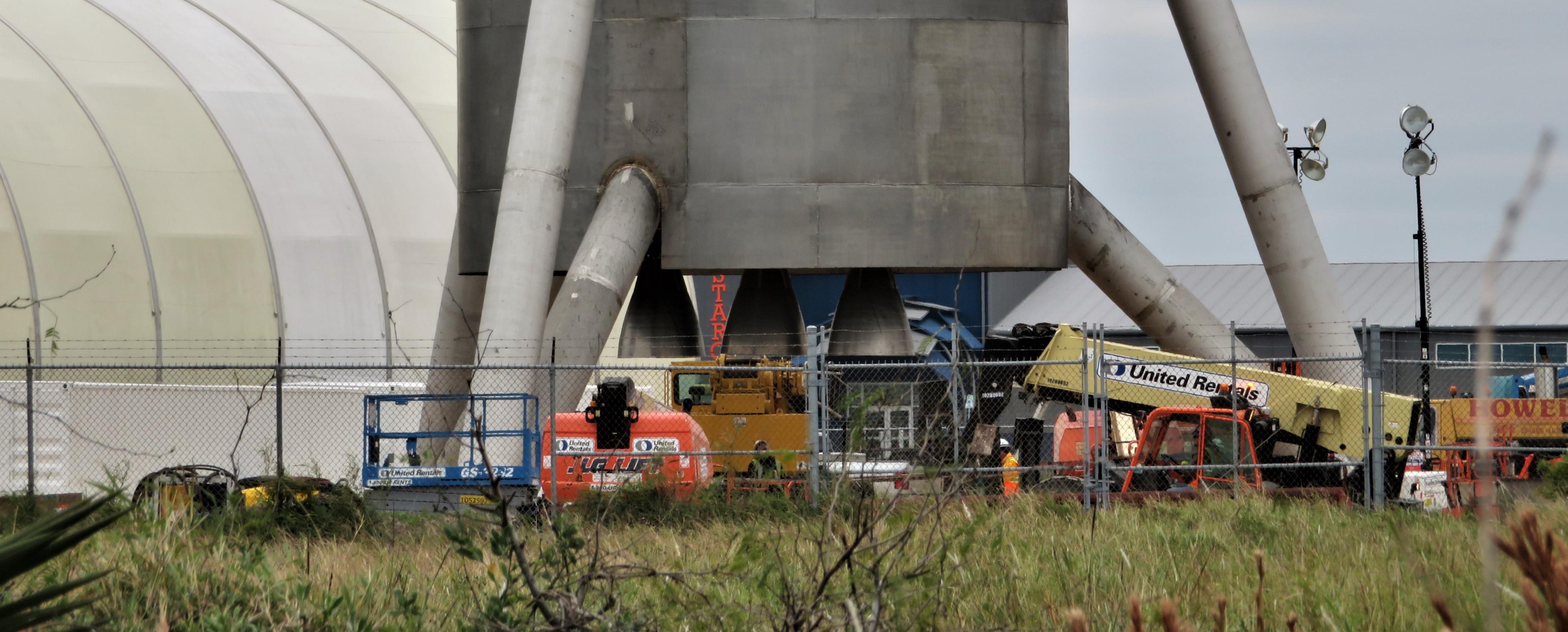
Known as deep throttling in rocketry, ensuring stable combustion and thrust at 20% (let alone 40%) throttle is an extraordinarily challenging feat, often subjecting engines to forces that can literally tear non-optimized hardware apart. To achieve such a deep throttle capability without excessively disrupting the engine’s design, SpaceX appears to have potentially sided with less efficient but extremely simple alternative, known as a dual-bell (or dual-expansion) rocket nozzle. A 1999 Rocketdyne paper concisely explained the primary draws of such a nozzle:
“The [altitude-compensating] dual-bell nozzle offers a unique combination of performance, simplicity, low weight, and ease of cooling” – Horn & Fisher, 1999
Exactly
— Elon Musk (@elonmusk) December 27, 2018
Given that SpaceX has decided to delay the introduction and certification of a vacuum-optimized Raptor engine, choosing to instead use the same Raptor on both BFR stages, something like a dual-bell nozzle would be one of the best possible ways for the company to retain some of the efficiency benefits of a vacuum engine while also drastically improving design simplicity, ease of manufacturing, and cutting development time. Aside from offering efficiency gains by way of altitude compensation, a dual-bell nozzle also happens to enable a given engine to operate a much wider throttle range by mitigating problems with flow separation and instability.
- A gif of Raptor throttling over the course of a 90+ second static-fire test in McGregor, Texas. (SpaceX)
- Note that Merlin 1D and prior Raptor prototypes both feature traditional single nozzles. (Pauline Acalin)
- An overview of dual-bell and deflection nozzles. Raptor appears to have now graduated to the former style. (Johan Steelant, 2011)
- Starhopper’s Raptors feature a very distinct seam and second curve, indicative of a dual-bell nozzle. (NASASpaceflight /u/bocachicagal)
For Starhopper and Starship, both aspects are an undeniable net-gain and it’s entirely possible that these dual-bell nozzles – if successfully demonstrated – could find their way onto Falcon 9 and Falcon Heavy to further boost their booster performance and efficiency.
For prompt updates, on-the-ground perspectives, and unique glimpses of SpaceX’s rocket recovery fleet check out our brand new LaunchPad and LandingZone newsletters!

Elon Musk
SpaceX maintains unbelievable Starship target despite Booster 18 incident
It appears that it will take more than an anomaly to stop SpaceX’s march towards Starship V3’s refinement.
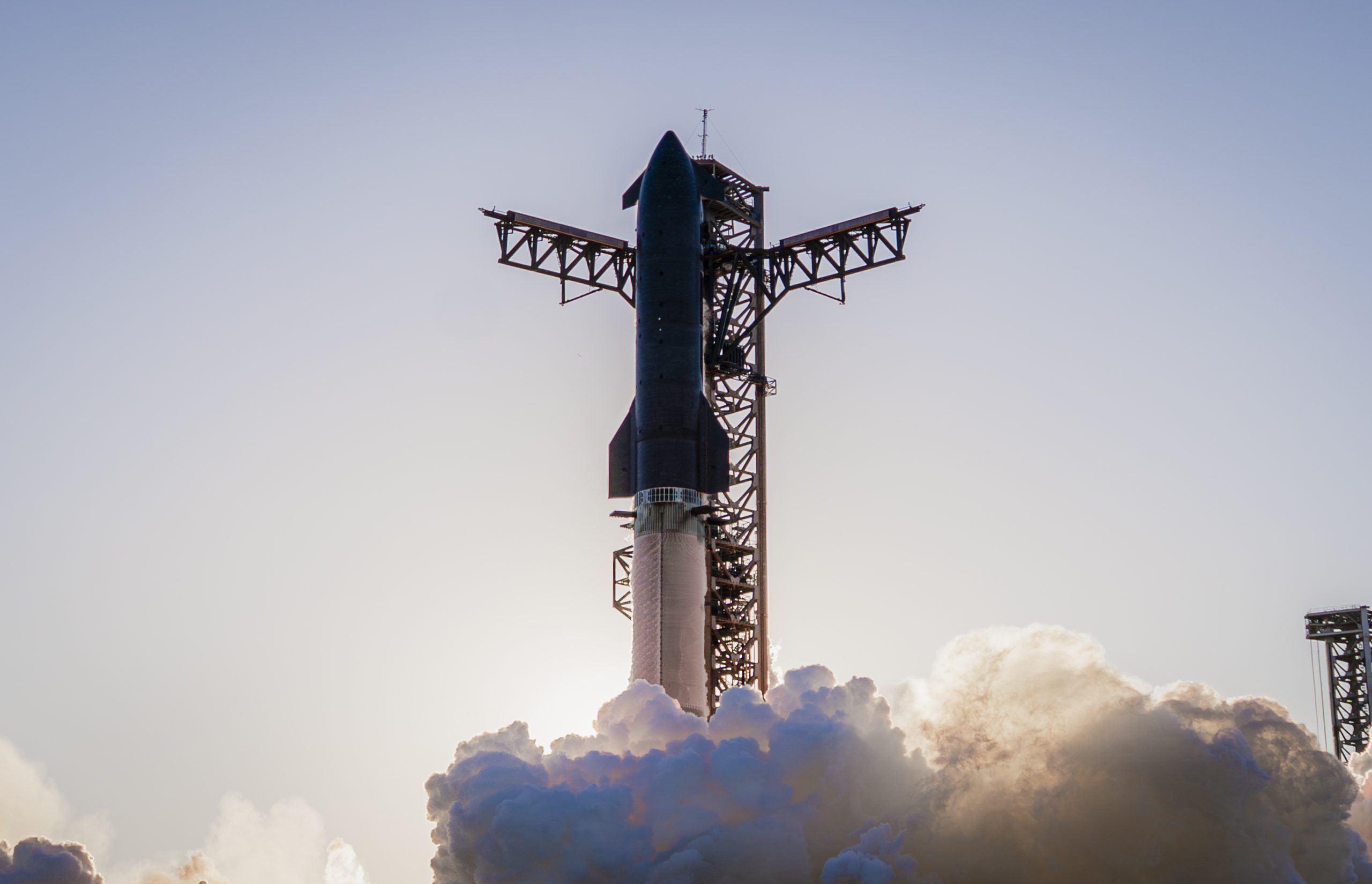
SpaceX recently shared an incredibly ambitious and bold update about Starship V3’s 12th test flight.
Despite the anomaly that damaged Booster 18, SpaceX maintained that it was still following its plans for the upgraded spacecraft and booster for the coming months. Needless to say, it appears that it will take more than an anomaly to stop SpaceX’s march towards Starship V3’s refinement.
Starship V3 is still on a rapid development path
SpaceX’s update was posted through the private space company’s official account on social media platform X. As per the company, “the Starbase team plans to have the next Super Heavy booster stacked in December, which puts it on pace with the test schedule planned for the first Starship V3 vehicle and associated ground systems.”
SpaceX then announced that Starship V3’s maiden flight is still expected to happen early next year. “Starship’s twelfth flight test remains targeted for the first quarter of 2026,” the company wrote in its post on X.
Elon Musk mentioned a similar timeline on X earlier this year. In the lead up to Starshp Flight 11, which proved flawless, Musk stated that “Starship V3 is a massive upgrade from the current V2 and should be through production and testing by end of year, with heavy flight activity next year.” Musk has also mentioned that Starship V3 should be good enough to use for initial Mars missions.
Booster 18 failure not slowing Starship V3’s schedule
SpaceX’s bold update came after Booster 18 experienced a major anomaly during gas system pressure testing at SpaceX’s Massey facility in Starbase, Texas. SpaceX confirmed in a post on X that no propellant was loaded, no engines were installed, and personnel were positioned at a safe distance when the booster’s lower section crumpled, resulting in no injuries.
Still, livestream footage showed significant damage around the liquid oxygen tank area of Booster 18, leading observers to speculate that the booster was a total loss. Booster 18 was among the earliest vehicles in the Starship V3 series, making the failure notable. Despite the setback, Starship V3’s development plans appear unchanged, with SpaceX pushing ahead of its Q1 2026 test flight target.
Elon Musk
SpaceX issues statement on Starship V3 Booster 18 anomaly
The incident unfolded during gas-system pressure testing at the company’s Massey facility in Starbase, Texas.

SpaceX has issued an initial statement about Starship Booster 18’s anomaly early Friday. The incident unfolded during gas-system pressure testing at the company’s Massey facility in Starbase, Texas.
SpaceX’s initial comment
As per SpaceX in a post on its official account on social media platform X, Booster 18 was undergoing gas system pressure tests when the anomaly happened. Despite the nature of the incident, the company emphasized that no propellant was loaded, no engines were installed, and personnel were kept at a safe distance from the booster, resulting in zero injuries.
“Booster 18 suffered an anomaly during gas system pressure testing that we were conducting in advance of structural proof testing. No propellant was on the vehicle, and engines were not yet installed. The teams need time to investigate before we are confident of the cause. No one was injured as we maintain a safe distance for personnel during this type of testing. The site remains clear and we are working plans to safely reenter the site,” SpaceX wrote in its post on X.
Incident and aftermath
Livestream footage from LabPadre showed Booster 18’s lower half crumpling around the liquid oxygen tank area at approximately 4:04 a.m. CT. Subsequent images posted by on-site observers revealed extensive deformation across the booster’s lower structure. Needless to say, spaceflight observers have noted that Booster 18 would likely be a complete loss due to its anomaly.
Booster 18 had rolled out only a day earlier and was one of the first vehicles in the Starship V3 program. The V3 series incorporates structural reinforcements and reliability upgrades intended to prepare Starship for rapid-reuse testing and eventual tower-catch operations. Elon Musk has been optimistic about Starship V3, previously noting on X that the spacecraft might be able to complete initial missions to Mars.
Elon Musk
SpaceX Starship Version 3 booster crumples in early testing
Photos of the incident’s aftermath suggest that Booster 18 will likely be retired.

SpaceX’s new Starship first-stage booster, Booster 18, suffered major damage early Friday during its first round of testing in Starbase, Texas, just one day after rolling out of the factory.
Based on videos of the incident, the lower section of the rocket booster appeared to crumple during a pressurization test. Photos of the incident’s aftermath suggest that Booster 18 will likely be retired.
Booster test failure
SpaceX began structural and propellant-system verification tests on Booster 18 Thursday night at the Massey’s Test Site, only a few miles from Starbase’s production facilities, as noted in an Ars Technica report. At 4:04 a.m. CT on Friday, a livestream from LabPadre Space captured the booster’s lower half experiencing a sudden destructive event around its liquid oxygen tank section. Post-incident images, shared on X by @StarshipGazer, showed notable deformation in the booster’s lower structure.
Neither SpaceX nor Elon Musk had commented as of Friday morning, but the vehicle’s condition suggests it is likely a complete loss. This is quite unfortunate, as Booster 18 is already part of the Starship V3 program, which includes design fixes and upgrades intended to improve reliability. While SpaceX maintains a rather rapid Starship production line in Starbase, Booster 18 was generally expected to validate the improvements implemented in the V3 program.
Tight deadlines
SpaceX needs Starship boosters and upper stages to begin demonstrating rapid reuse, tower catches, and early operational Starlink missions over the next two years. More critically, NASA’s Artemis program depends on an on-orbit refueling test in the second half of 2026, a requirement for the vehicle’s expected crewed lunar landing around 2028.
While SpaceX is known for diagnosing failures quickly and returning to testing at unmatched speed, losing the newest-generation booster at the very start of its campaign highlights the immense challenge involved in scaling Starship into a reliable, high-cadence launch system. SpaceX, however, is known for getting things done quickly, so it would not be a surprise if the company manages to figure out what happened to Booster 18 in the near future.
